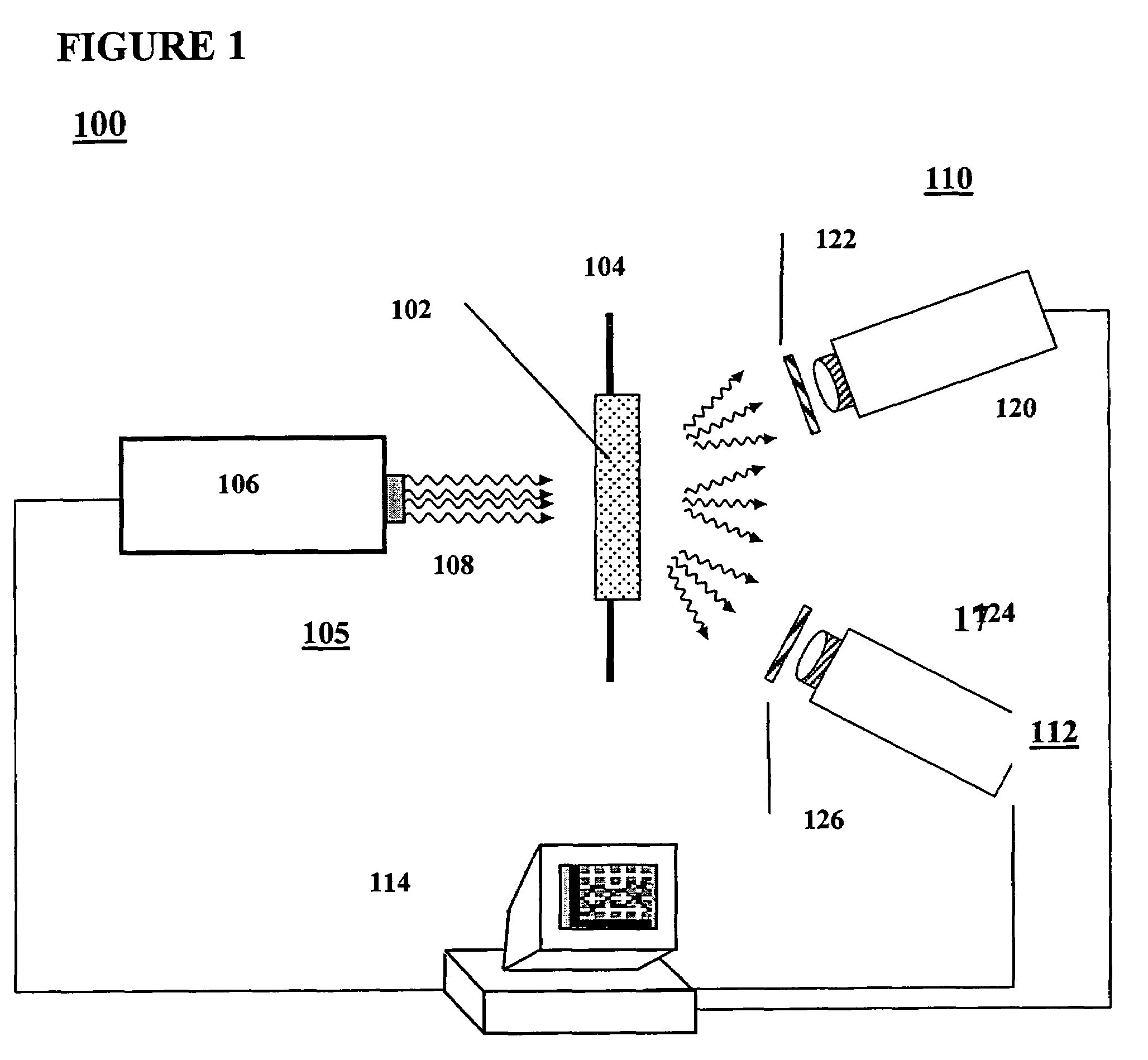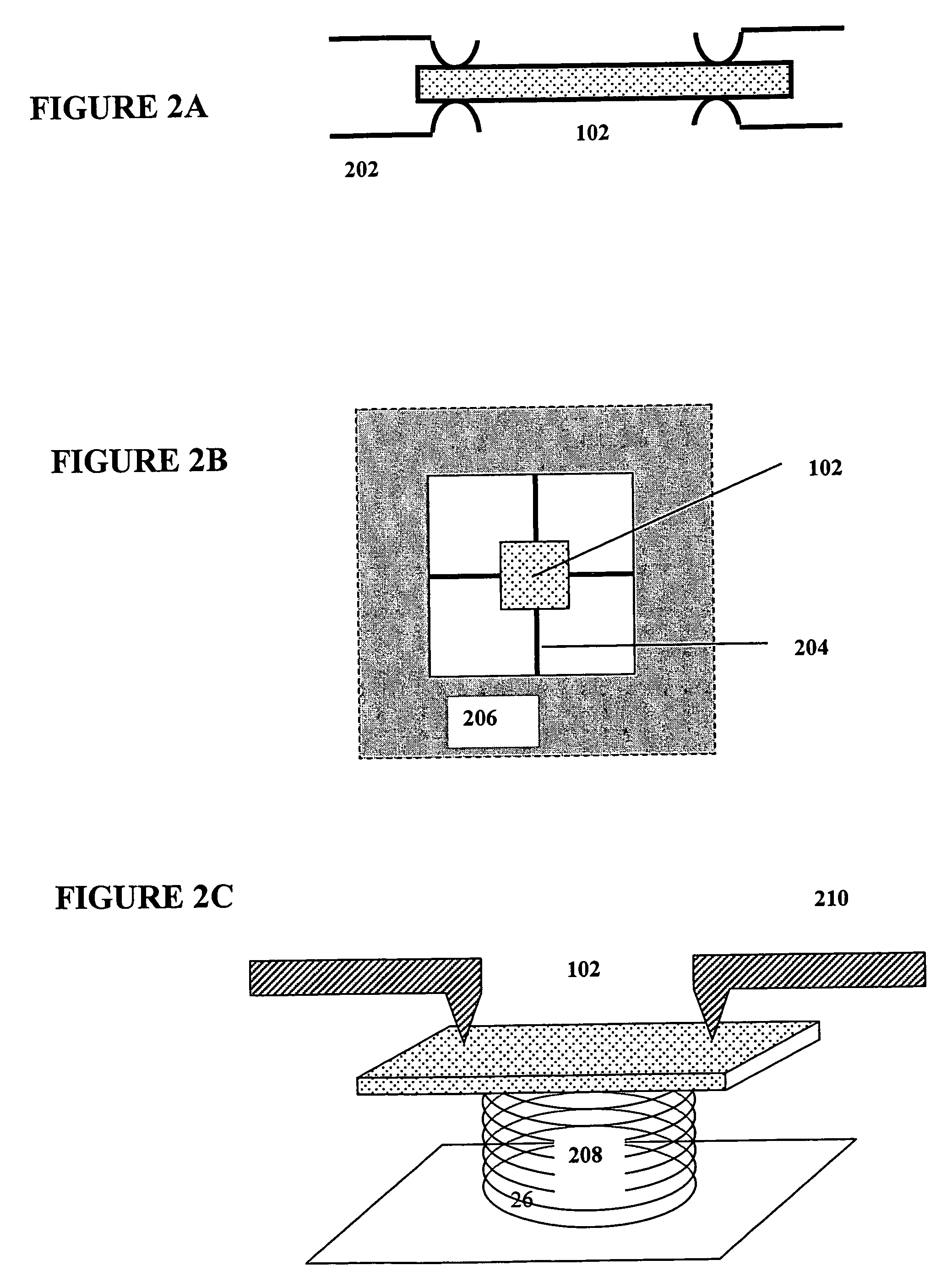Thermoluminescence measurements and dosimetry with temperature control of the thermoluminescent element
a technology of thermoluminescent elements and measurements, applied in the field of dosimeter systems, can solve the problems of insufficient reproducibility of this method, complex and expensive whole system, and inability to accurately measure the temperature of the thermoluminescent element, etc., to achieve fast, accurate and reproducible, and facilitate tl measurements.
- Summary
- Abstract
- Description
- Claims
- Application Information
AI Technical Summary
Benefits of technology
Problems solved by technology
Method used
Image
Examples
application example
[0077]The TLD system of FIG. 3B (fiber directed radiation) was used in measurements that illustrate the applicability and performance of the method described herein. The controlled heating process in each measurement was programmed to a linear scheme from T0=30° C. to T=300° C., for three different heating periods: 15, 20, and 60 seconds. Therefore, three different heating rates were employed, from α=4.5 degrees / sec to α=18 degrees / sec. The TLD element (a standard TLD-100 3×3 mm chip manufactured by Thermo—Harshaw, Oakwood Village, Ohio, USA) was heated by a CO2 laser (Model J-48-2, Synrad, Mukilteo, Wash., USA) whose radiation (λ=10.6 μm) is highly absorbed by most materials. This mid-IR radiation cannot be transmitted through standard silica based optical fibers, but it can be easily transmitted through silver halide (e.g. AgClBr) fibers. The radiation of a CO2 laser was transmitted through one silver halide fiber to heat a spot on the surface of the TLD element. A second silver-h...
PUM
 Login to View More
Login to View More Abstract
Description
Claims
Application Information
 Login to View More
Login to View More - R&D
- Intellectual Property
- Life Sciences
- Materials
- Tech Scout
- Unparalleled Data Quality
- Higher Quality Content
- 60% Fewer Hallucinations
Browse by: Latest US Patents, China's latest patents, Technical Efficacy Thesaurus, Application Domain, Technology Topic, Popular Technical Reports.
© 2025 PatSnap. All rights reserved.Legal|Privacy policy|Modern Slavery Act Transparency Statement|Sitemap|About US| Contact US: help@patsnap.com



